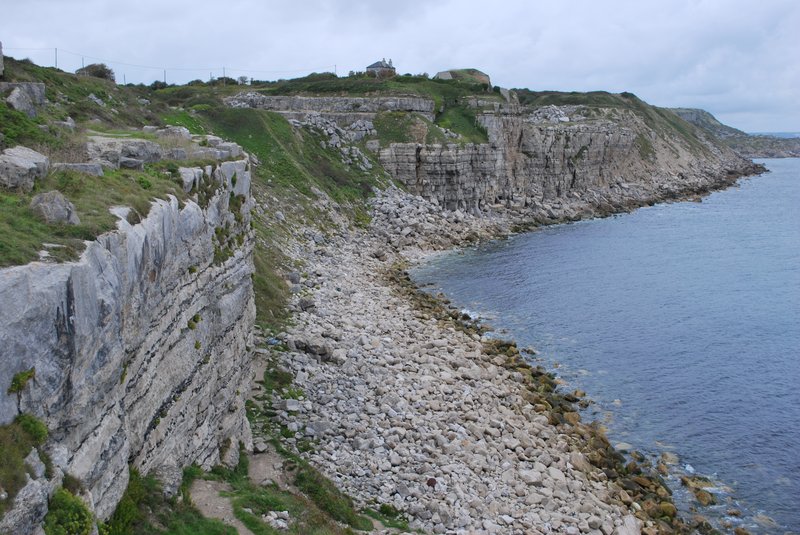
Lincoln Cathedral, constructed from the Jurassic (Bajocian) aged Lincolnshire Limestone Formation
Elsewhere, limestone was the local building stone for cathedrals – for example, the Jurassic aged Lincolnshire Limestone was used to build Lincoln Cathedral. The mineralogy, grain size and volume of pore space of the rock is extremely important in governing the strength and resistance of the rock to physical and chemical weathering and building stone remains in demand for repairs and also extensions and modifications to stone masonry.

Freshwater Bay, Isle of Portland, where limestone is quarried for building stone
Perhaps more importantly, carbonate rocks are a critical raw material for more conventional building construction and road-building. Huge quarries across the country, particularly in North Wales, Derbyshire and Yorkshire, extract limestone for use as the primary raw material for cement, as well as processing it to form lime that is then supplied to the iron and steel industry and agricultural manufacturers. It is also used in the manufacture of paint, glass, plastics and pharmaceuticals. Chalk, a very fine grained limestone, is used for similar purposes. A significant volume of limestone is also used as aggregate, for example for road construction.